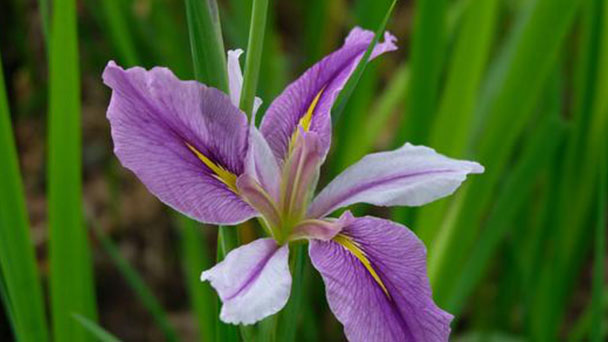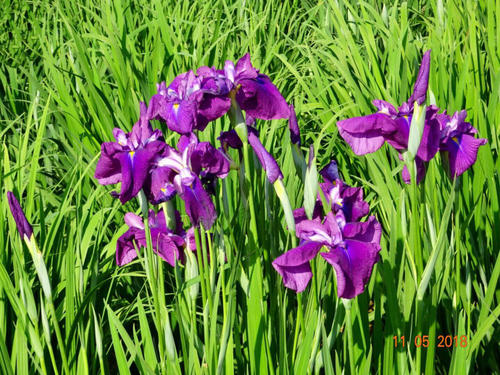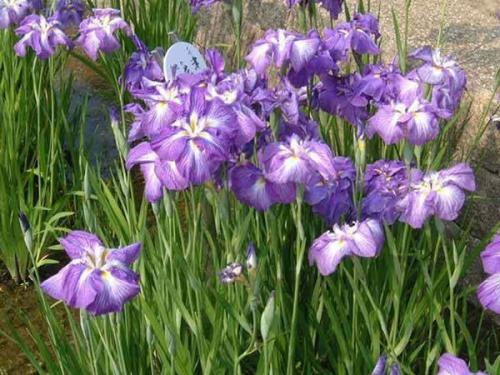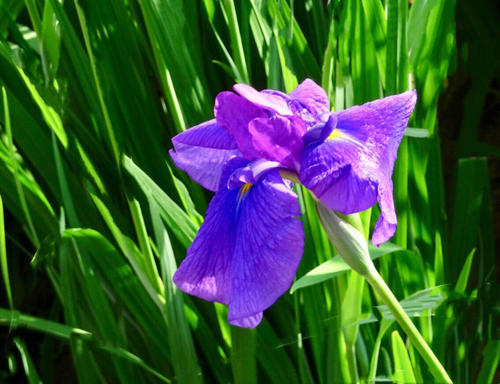How to grow Japanese water Iris
Written by Maggie
Dec 18 2020

Japanese water Iris has a high horticultural value, both for ornamental purposes and medicinal herbs. For example, the better known flower and calamus is a plant derived from Japanese water Iris. How to grow Japanese water iris in your family? In fact, it is easy to grow Japanese water Iris by mastering the moisture and air humidity.

How to grow Japanese Water Iris
1. Soil selection for Japanese water Iris
Japanese water iris is not very demanding in terms of the selectivity of the soil, nor does it say that there is a specific soil that is needed to grow and germinate, so for potted plants in the home, just choose a common organic soil. However, the soil permeability and permeability to be good, otherwise late breeding will have a lot of trouble.
2. Water requirement of Japanese water Iris
This plant grows in nature in waterside wetlands, so the requirements for moisture and air humidity are relatively high. Sooner or later watering is relatively fixed, but each time watering a little less. Do not bring about too much watering basin soil moisture in the accumulation of waterlogging. If it's hot and dry in the summer, spray the plants to cool them down.
3. Fertilize and conserve Japanese water Iris
Generally speaking, before japanese water iris is introduced into the soil, rotting fertilizer is used to mix with soil to form a strong nutrient reserve for the plants at seedling stage. Usually Japanese water Iris do not need to fertilize. Half a month before the arrival of the flowering period can be applied pig manure, peat and other organic matter mixed decay fertilizer. In addition, nitrogen fertilizer can prevent pests and diseases.

4. Temperature and illumination for Japanese water Iris
The character of the Japanese water Iris likes warmth and light. So in the growing process, the plant should be guaranteed to have 4 to 6 hours of normal sun exposure every day to ensure that the plant can get the sunshine. Avoid strong sunlight in summer, and adjust your cooling measures for high temperatures. Winter is cold, flower friends should keep Japanese water Iris warm in time.
Japanese water iris pest control
A common ailment is leaf blight, which, once infected, causes the leaves to wilt and even to wither in the wind, making the flower lovers look very distressed. A 500-fold spray of 65% Daisen zinc wettable powder can slowly recover. In addition, there will be thrips and scale insect harm, 2.5% deltamethrin emulsion 4000 times liquid and spray 40% dikeberry emulsion 1000 times liquid.

Latest Updated
- Benefits of Bugleweed - 7 Science-backed Health Benefits
- Bugleweed Dangers & Side Effects - Is It Poisonous?
- How to Plant Evergreen Trees - What You Should Know
- When to Plant Evergreens - Grow Guide for Evergreen Trees
- 12 Wonderful Evergreen Shrubs for Your Garden
- 12 Popular Evergreen Plants with Pictures for Beginners
- When And How To Prune A Lilac Bush Like a Pro
- How to Grow & Care for Lilac Vine (Hardenbergia Violacea)
- Japanese Lilac Tree (Syringa Reticulata) Care & Propagation Guide
- Shumard Oak Pros and Cons - What to Know
Popular Articles
- Winter maintenance of Antirrhinum Majus
- How to Grow Terminalia Mantaly Tree
- How to Grow and Care for Crossostephium Chinense
- How to grow Antirrhinum Majus in spring
- Peristeria Elata (Dove Orchid) Profile: Info & Care Guide
- Underwatered Snake Plant (Sansevieria Trifasciata) - Signs And How To Fix
- How to Care for Brazilian Jasmine Plant (Mandevilla Sanderi)
- How to Grow & Care for Graptopetalum Purple Delight in Summer
- Rosa Chinensis (China Rose): Plant Growing & Care Tips
- How to Care for Baby Sun Rose (Aptenia Cordifolia)